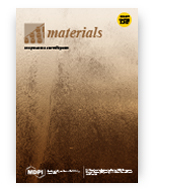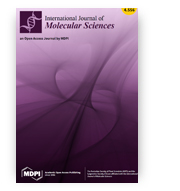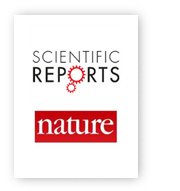Comparison of Osmotic Resistance, Shape and Transmembrane Potential of Erythrocytes Collected from Healthy and Fed with High Fat-Carbohydrates Diet (HF-CD) Pigs — Protective Effect of Cistus incanus L. Extracts
Sylwia Cyboran-Mikołajczyk, Robert Pasławski, Urszula Pasławska, Kacper Nowak, Michał Płóciennik, Katarzyna Męczarska, Jan Oszmiański, Dorota Bonarska-Kujawa, Paweł Kowalczyk, Magdalena Wawrzyńska
Materials
 Long-term high fat-carbohydrates diet (HF-CD) contributes to the formation of irreversible changes in the organism that lead to the emergence of civilization diseases. In this study, the impact of three-month high-fat diet on the physical properties of erythrocytes (RBCs) was studied. Furthermore, the biological activity of Cistus incanus L. extracts, plant known with high pro-health potential, in relation to normal and HF-CD RBCs, was determined. Obtained results have shown that, applied HF-CD modified shape, membrane potential and osmotic resistance of erythrocytes causing changes in membrane lipid composition and the distribution of lipids. The impact of HF-CD on physical properties of RBCs along with atherosclerotic lesions of the artery was visible, despite the lack of statistically significant changes in blood morphology and plasma lipid profile. This suggests that erythrocytes may be good markers of obesity-related diseases. The studies of biological activity of Cistus incanus L. extracts have demonstrated that they may ameliorate the effect of HF-CD on erythrocytes through the membrane-modifying and antioxidant activity.
Long-term high fat-carbohydrates diet (HF-CD) contributes to the formation of irreversible changes in the organism that lead to the emergence of civilization diseases. In this study, the impact of three-month high-fat diet on the physical properties of erythrocytes (RBCs) was studied. Furthermore, the biological activity of Cistus incanus L. extracts, plant known with high pro-health potential, in relation to normal and HF-CD RBCs, was determined. Obtained results have shown that, applied HF-CD modified shape, membrane potential and osmotic resistance of erythrocytes causing changes in membrane lipid composition and the distribution of lipids. The impact of HF-CD on physical properties of RBCs along with atherosclerotic lesions of the artery was visible, despite the lack of statistically significant changes in blood morphology and plasma lipid profile. This suggests that erythrocytes may be good markers of obesity-related diseases. The studies of biological activity of Cistus incanus L. extracts have demonstrated that they may ameliorate the effect of HF-CD on erythrocytes through the membrane-modifying and antioxidant activity.
Complementarity and ‘Resource Droughts’ of Solar and Wind Energy in Poland: An ERA5-Based Analysis
Jakub Jurasz, Jerzy Mikulik, Paweł Dąbek, Mohammed Guezgouz, Bartosz Kaźmierczak
Energies
 In recent years, Poland has experienced a significant increase in the installed capacity of solar and wind power plants. Renewables are gaining increasing interest not only because of Poland’s obligations to European Union policies, but also because they are becoming cheaper. Wind and solar energy are fairly-well investigated technologies in Poland and new reports are quite frequently added to the existing research works documenting their potential and the issues related to their use. In this article, we analyze the spatial and temporal behavior of solar and wind resources based on reanalysis datasets from ERA5. This reanalysis has been selected because it has appropriate spatial and temporal resolution and fits the field measurements well. The presented analysis focuses only on the availability of energy potential/resources, so characteristics intrinsic to energy conversion (like wind turbine power curve) were not considered. The analysis considered the last 40 years (1980–2019) of available data. The Spearman coefficient of correlation was considered as a complementarity metric, and the Mann–Kendal test was used to assess the statistical significance of trends. The results revealed that: The temporal complementarity between solar and wind resources exists mostly on a seasonal scale and is almost negligible for daily and hourly observations. Moreover, solar and wind resources in joint operation exhibit a smoother availability pattern (assessed based on coefficient of variation). Further findings show that the probability of ‘resource droughts’ (periods when cumulative generation was less than arbitrary threshold) lasting one day is 11.5% for solar resources, 21.3% for wind resources and only 6.2% if both resources are considered in a joint resource evaluation. This situation strongly favors the growth of local hybrid systems, as their combined power output would exhibit lower variability and intermittency, thus decreasing storage demand and/or smoothing power system operation.
In recent years, Poland has experienced a significant increase in the installed capacity of solar and wind power plants. Renewables are gaining increasing interest not only because of Poland’s obligations to European Union policies, but also because they are becoming cheaper. Wind and solar energy are fairly-well investigated technologies in Poland and new reports are quite frequently added to the existing research works documenting their potential and the issues related to their use. In this article, we analyze the spatial and temporal behavior of solar and wind resources based on reanalysis datasets from ERA5. This reanalysis has been selected because it has appropriate spatial and temporal resolution and fits the field measurements well. The presented analysis focuses only on the availability of energy potential/resources, so characteristics intrinsic to energy conversion (like wind turbine power curve) were not considered. The analysis considered the last 40 years (1980–2019) of available data. The Spearman coefficient of correlation was considered as a complementarity metric, and the Mann–Kendal test was used to assess the statistical significance of trends. The results revealed that: The temporal complementarity between solar and wind resources exists mostly on a seasonal scale and is almost negligible for daily and hourly observations. Moreover, solar and wind resources in joint operation exhibit a smoother availability pattern (assessed based on coefficient of variation). Further findings show that the probability of ‘resource droughts’ (periods when cumulative generation was less than arbitrary threshold) lasting one day is 11.5% for solar resources, 21.3% for wind resources and only 6.2% if both resources are considered in a joint resource evaluation. This situation strongly favors the growth of local hybrid systems, as their combined power output would exhibit lower variability and intermittency, thus decreasing storage demand and/or smoothing power system operation.
10.3390/en14041118
Evaluation of Urban Tree Leaf Biomass-Potential, Physico-Mechanical and Chemical Parameters of Raw Material and Solid Biofuel
Krzysztof Mudryk, Marcin Jewiarz, Marek Wróbel, Marcin Niemiec, Arkadiusz Dyjakon
Energies
 The paper presents the results of research aimed at evaluating the possibility of usingselected tree leaf species to produce solid biofuels. The possibility of production of qualitative solidbiofuels from urban tree leaves meets the expectations of the municipal sector. Collection of treeleaves in urban areas is very often necessary for road safety reasons, the need to collect biomass richin dust and pollution as well as biomass infested with pests. The production of solid biofuels fromtree leaves allows for effective management of this raw material with energy recovery. The performedresearch indicates such a possibility, and the obtained ash is used as a soil improver. The conductedresearch showed that the biomass of leaves of five tree species used in the experiment can be a sourceof raw materials for production of qualitative biofuels. The obtained pellets were characterized byproperties comparable to those of classical wood pellets. The lower heating value of the obtainedpellets ranged from 14.5 to 15.5 MJ·kg−1. Physical properties of the obtained pellets described bybulk density (BD 600–660 kg·m−3), mechanical durability (DU 90–96%), moisture (Mar10–12.5%)indicate that these products can be used in existing combustion equipment. Preliminary analysis ofthe obtained ashes (determination of ash melting point, bulk density) indicates that they should notcause difficulties in ash removal systems from the combustion chamber.
The paper presents the results of research aimed at evaluating the possibility of usingselected tree leaf species to produce solid biofuels. The possibility of production of qualitative solidbiofuels from urban tree leaves meets the expectations of the municipal sector. Collection of treeleaves in urban areas is very often necessary for road safety reasons, the need to collect biomass richin dust and pollution as well as biomass infested with pests. The production of solid biofuels fromtree leaves allows for effective management of this raw material with energy recovery. The performedresearch indicates such a possibility, and the obtained ash is used as a soil improver. The conductedresearch showed that the biomass of leaves of five tree species used in the experiment can be a sourceof raw materials for production of qualitative biofuels. The obtained pellets were characterized byproperties comparable to those of classical wood pellets. The lower heating value of the obtainedpellets ranged from 14.5 to 15.5 MJ·kg−1. Physical properties of the obtained pellets described bybulk density (BD 600–660 kg·m−3), mechanical durability (DU 90–96%), moisture (Mar10–12.5%)indicate that these products can be used in existing combustion equipment. Preliminary analysis ofthe obtained ashes (determination of ash melting point, bulk density) indicates that they should notcause difficulties in ash removal systems from the combustion chamber.
Impact of Liposomal Drug Formulations on the RBCs Shape, Transmembrane Potential, and Mechanical Properties
Sylwia Cyboran-Mikołajczyk, Przemysław Sareło, Robert Pasławski, Urszula Pasławska, Magdalena Przybyło, Kacper Nowak, Michał Płóciennik, Podbielska Halina, Marta Kopaczyńska, Magdalena Wawrzyńska
International Journal of Molecular Sciences
 Liposomal technologies are used in order to improve the effectiveness of current therapies or to reduce their negative side effects. However, the liposome–erythrocyte interaction during the intravenous administration of liposomal drug formulations may result in changes within the red blood cells (RBCs). In this study, it was shown that phosphatidylcholine-composed liposomal formulations of Photolon, used as a drug model, significantly influences the transmembrane potential, stiffness, as well as the shape of RBCs. These changes caused decreasing the number of stomatocytes and irregular shapes proportion within the cells exposed to liposomes. Thus, the reduction of anisocytosis was observed. Therefore, some nanodrugs in phosphatidylcholine liposomal formulation may have a beneficial effect on the survival time of erythrocytes.
Liposomal technologies are used in order to improve the effectiveness of current therapies or to reduce their negative side effects. However, the liposome–erythrocyte interaction during the intravenous administration of liposomal drug formulations may result in changes within the red blood cells (RBCs). In this study, it was shown that phosphatidylcholine-composed liposomal formulations of Photolon, used as a drug model, significantly influences the transmembrane potential, stiffness, as well as the shape of RBCs. These changes caused decreasing the number of stomatocytes and irregular shapes proportion within the cells exposed to liposomes. Thus, the reduction of anisocytosis was observed. Therefore, some nanodrugs in phosphatidylcholine liposomal formulation may have a beneficial effect on the survival time of erythrocytes.
Synthesis of novel phytol-derived γ-butyrolactones and evaluation of their biological activity
Anna Gliszczyńska, Katarzyna Dancewicz, Grzegorz Gabryś, Marta Świtalska, Joanna Wietrzyk, Gabriela Maciejewska
Scientific Reports
 The synthesis of phytol-derived γ-butyrolactones as well as their evaluation for deterrent activity towards peach-potato aphid Myzus persicae and antiproliferative activity against four selected cancer cell lines are reported. Products were obtained in good yields (19–96%) and their structures were fully characterized by spectroscopic data (NMR, HRMS). Four synthesized δ-halo-γ-lactones (4–7) are new and have not been previously described in the literature. In the choice test phytol (1) appeared deterrent to M. persicae, whereas modifications of its structure did not cause the avoidance of the treated leaves by the aphids. In contrast, aphids were attracted to the leaves treated with the new trans-δ-chloro-γ-lactone (6). Electrical Penetration Graph (EPG) technique applied to explore the aphid probing and feeding activity revealed that neither phytol nor lactone 6 affected aphid probing and the consumption of phloem sap, which means that both phytol and the lactone 6 might have acted as postingestive modifiers of aphid behavior. The results of in vitro antitumor assays showed that obtained phytol derivatives exhibit cytotoxic activity against studied cancer cell lines (leukemia, lung and colon carcinoma and its doxorubicin resistant subline). Halolactones 4–6 were identified as the compounds, which arrest cell cycle of leukemia cells mainly in G2/M and S phases.
The synthesis of phytol-derived γ-butyrolactones as well as their evaluation for deterrent activity towards peach-potato aphid Myzus persicae and antiproliferative activity against four selected cancer cell lines are reported. Products were obtained in good yields (19–96%) and their structures were fully characterized by spectroscopic data (NMR, HRMS). Four synthesized δ-halo-γ-lactones (4–7) are new and have not been previously described in the literature. In the choice test phytol (1) appeared deterrent to M. persicae, whereas modifications of its structure did not cause the avoidance of the treated leaves by the aphids. In contrast, aphids were attracted to the leaves treated with the new trans-δ-chloro-γ-lactone (6). Electrical Penetration Graph (EPG) technique applied to explore the aphid probing and feeding activity revealed that neither phytol nor lactone 6 affected aphid probing and the consumption of phloem sap, which means that both phytol and the lactone 6 might have acted as postingestive modifiers of aphid behavior. The results of in vitro antitumor assays showed that obtained phytol derivatives exhibit cytotoxic activity against studied cancer cell lines (leukemia, lung and colon carcinoma and its doxorubicin resistant subline). Halolactones 4–6 were identified as the compounds, which arrest cell cycle of leukemia cells mainly in G2/M and S phases.
10.1038/s41598-021-83736-6
The melibiose-derived glycation product mimics a unique epitope present in human and animal tissues
Magdalena Staniszewska, Agnieszka Bronowicka-Szydełko, Kinga Gostomska-Pampuch, Jerzy Szkudlarek, Arkadiusz Bartyś, Tadeusz Bieg, Elżbieta Gamian, Agata Kochman, Bolesław Picur, Jadwiga Pietkiewicz, Piotr Kuropka, Wiesław Szeja, Jerzy Wiśniewski, Piotr Ziółkowski, Andrzej Gamian
Scientific Reports
 Non-enzymatic modification of proteins by carbohydrates, known as glycation, leads to generation of advanced glycation end-products (AGEs). In our study we used in vitro generated AGEs to model glycation in vivo. We discovered in vivo analogs of unusual melibiose-adducts designated MAGEs (mel-derived AGEs) synthesized in vitro under anhydrous conditions with bovine serum albumin and myoglobin. Using nuclear magnetic resonance spectroscopy we have identified MAGEs as a set of isomers, with open-chain and cyclic structures, of the fructosamine moiety. We generated a mouse anti-MAGE monoclonal antibody and show for the first time that the native and previously undescribed analogous glycation product exists in living organisms and is naturally present in tissues of both invertebrates and vertebrates, including humans. We also report MAGE cross-reactive auto-antibodies in patients with diabetes. We anticipate our approach for modeling glycation in vivo will be a foundational methodology in cell biology. Further studies relevant to the discovery of MAGE may contribute to clarifying disease mechanisms and to the development of novel therapeutic options for diabetic complications, neuropathology, and cancer.
Non-enzymatic modification of proteins by carbohydrates, known as glycation, leads to generation of advanced glycation end-products (AGEs). In our study we used in vitro generated AGEs to model glycation in vivo. We discovered in vivo analogs of unusual melibiose-adducts designated MAGEs (mel-derived AGEs) synthesized in vitro under anhydrous conditions with bovine serum albumin and myoglobin. Using nuclear magnetic resonance spectroscopy we have identified MAGEs as a set of isomers, with open-chain and cyclic structures, of the fructosamine moiety. We generated a mouse anti-MAGE monoclonal antibody and show for the first time that the native and previously undescribed analogous glycation product exists in living organisms and is naturally present in tissues of both invertebrates and vertebrates, including humans. We also report MAGE cross-reactive auto-antibodies in patients with diabetes. We anticipate our approach for modeling glycation in vivo will be a foundational methodology in cell biology. Further studies relevant to the discovery of MAGE may contribute to clarifying disease mechanisms and to the development of novel therapeutic options for diabetic complications, neuropathology, and cancer.
10.1038/s41598-021-82585-7









